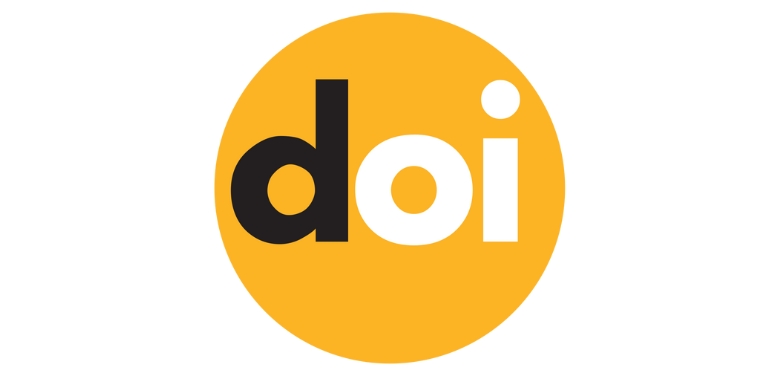A Systematic Investigation Based on BCI and EEG Implemented using Machine Learning Algorithms
DOI:
https://doi.org/10.63053/ijset.45Keywords:
EEG, BCI, Sport Science, Biomedical Approaches, Machine LearningAbstract
BCI is a strong tool that improves human-system communication. It improves the brain's ability to interact with its surroundings. Recent decades have seen substantial advances in neuroscience and computer science. This has made BCI a leader in computational neuroscience and intelligence research. Recent technological advances including wearable sensing devices, real-time data streaming, machine learning, and deep learning have raised the need for electroencephalographic (EEG)-based brain-computer interface (BCI) in clinical and translational applications. EEG-based Brain-Computer Interfaces (BCIs) detect cognitive state variations throughout laborious tasks, making them advantageous for individuals. To fill in the gaps in the wide overview of the past five years (2019-2024), we surveyed the newest research on EEG signal detection and computational intelligence in brain-computer interfaces. To provide a more accurate account, we will begin by reviewing Brain-Computer Interface (BCI) technology and its main challenges. Modern signal detection and enhancement techniques for EEG signal collection and refinement follow. We also provide advanced computational intelligence methods for tracking, maintaining, and monitoring human cognitive and operational performance in everyday applications. Combinations, interpretable fuzzy models, transfer learning, and deep learning are used. We conclude with a sample of cutting-edge BCI-driven healthcare applications and explore future EEG-based BCI research.
References
Narayana S, Prasad RV, Warmerdam K. Mind your thoughts: BCI using single EEG electrode. IET Cyber‐Physical Systems: Theory & Applications. 2019 Jun;4(2):164-72.
Liebl S, Tischendorf T, Winterlich J, Schaal T. Technical innovations in stroke rehabilitation–a survey for development of a non-invasive, brainwave-guided, functional muscle stimulation. BMC neurology. 2022 May 25;22(1):194.
Zhang X, Yao L, Kanhere SS, Liu Y, Gu T, Chen K. Mindid: Person identification from brain waves through attention-based recurrent neural network. Proceedings of the ACM on Interactive, Mobile, Wearable and Ubiquitous Technologies. 2018 Sep 18;2(3):1-23.
Sakthivel N, Florence ML. An exploration of human brain activity using BCI with EEG techniques. Int J Advanced Networking and Applications. 2023;15(4):100-200.
Koudelková Z, Strmiska M, Jašek R. Analysis of brain waves according to their frequency. Int. J. Biol. Biomed. Eng. 2018 Oct;12:202-7.
Alimardani M, Hiraki K. Passive brain-computer interfaces for enhanced human-robot interaction. Frontiers in Robotics and AI. 2020 Oct 2;7:125.
Barnova K, Mikolasova M, Kahankova RV, Jaros R, Kawala-Sterniuk A, Snasel V, Mirjalili S, Pelc M, Martinek R. Implementation of artificial intelligence and machine learning-based methods in brain–computer interaction. Computers in Biology and Medicine. 2023 Sep 1;163:107135.
Sonko S, Fabuyide A, Ibekwe KI, Etukudoh EA, Ilojianya VI. Neural interfaces and human-computer interaction: A US review: Delving into the developments, ethical considerations, and future prospects of brain-computer interfaces. International Journal of Science and Research Archive. 2024;11(1):702-17.
Vasiljevic GA, de Miranda LC. Comparing users' performance and game experience between a competitive and collaborative brain-computer interface. Behaviour & Information Technology. 2024 Jan 2;43(1):40-59.
Aggarwal S, Chugh N. Review of machine learning techniques for EEG based brain computer interface. Archives of Computational Methods in Engineering. 2022 Aug;29(5):3001-20.
Gu X, Cao Z, Jolfaei A, Xu P, Wu D, Jung TP, Lin CT. EEG-based brain-computer interfaces (BCIs): A survey of recent studies on signal sensing technologies and computational intelligence approaches and their applications. IEEE/ACM transactions on computational biology and bioinformatics. 2021 Jan 19;18(5):1645-66.
Jamil N, Belkacem AN, Ouhbi S, Guger C. Cognitive and affective brain–computer interfaces for improving learning strategies and enhancing student capabilities: A systematic literature review. Ieee Access. 2021 Sep 23;9:134122-47.
Abo Alzahab N, Apollonio L, Di Iorio A, Alshalak M, Iarlori S, Ferracuti F, Monteriù A, Porcaro C. Hybrid Deep Learning (hDL)-Based Brain-Computer Interface (BCI) Systems: A Systematic Review. Brain Sci. 2021, 11, 75.
A Deeper Review Over Big Data Analytics Within Health Care Applicationss
Vishwakarma R, Khwaja H, Samant V, Gaude P, Gambhir M, Aswale S. EEG signals analysis and classification for BCI systems: a review. In2020 International Conference on Emerging Trends in Information Technology and Engineering (ic-ETITE) 2020 Feb 24 (pp. 1-6). IEEE.
Nair SA, Megalingam RK. Human attention detection system using deep learning and brain–computer interface. Neural Computing and Applications. 2024 Jun;36(18):10927-40.
Abdulwahab SS, Khleaf HK, Jassim MH, Abdulwahab S. A Systematic Review of Brain-Computer Interface Based EEG. Iraqi J. Electr. Electron. Eng. 2020 Dec;16(2):1-0.
Bagheri I, Bayat M, Roudaki Z, Ebrahimi E. Evaluation and Analysis of QRS Complex in Electrocardiogram Signals for Athletes.
Downloads
Published
How to Cite
Issue
Section
License
Copyright (c) 2024 Authors

This work is licensed under a Creative Commons Attribution 4.0 International License.












